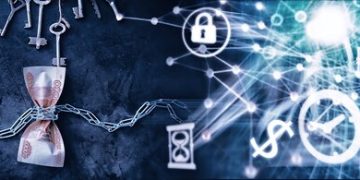Latest cybersecurity strategies protecting financial data

Latest cybersecurity strategies for protecting financial data involve strong password policies, employee training, advanced technology use, and data encryption to mitigate cyber threats effectively.
Latest cybersecurity strategies protecting financial data have become essential in an era where digital threats lurk everywhere. Have you ever wondered how secure your financial data really is? In this article, we will explore effective approaches to safeguard your sensitive information and keep it out of reach from cybercriminals.
Understanding cybersecurity threats to financial data
Understanding the cybersecurity threats to financial data is crucial in today’s digital age. As technology evolves, so do the methods used by cybercriminals to access sensitive information. This section will delve into the various types of threats that target financial data.
Types of Cybersecurity Threats
There are several major threats that financial institutions and businesses face today. Recognizing these threats is the first step in defending against them. Here are some common types:
- Phishing Attack: Fraudulent emails that impersonate trusted sources to trick individuals into revealing personal information.
- Malware: Malicious software designed to disrupt, damage, or gain unauthorized access to computer systems.
- Data Breaches: Incidents where sensitive financial information is accessed without authorization, often resulting in significant financial loss.
- Ransomware: A type of malware that encrypts the victim’s data and demands payment for decryption.
Education and awareness are vital in combating these threats. Employees should be trained on how to identify phishing attempts and recognize suspicious activities. Additionally, implementing multi-factor authentication can enhance security and protect sensitive financial data.
The Role of Insider Threats
It’s important to note that threats can also come from within an organization. Insider threats may involve employees misusing access to sensitive information, whether maliciously or unintentionally. Therefore, monitoring employee access and encouraging a security-first culture can greatly reduce risks.
Another aspect to consider is how frequently the cyber threat landscape evolves. Cybercriminals are constantly improving their tactics, making it essential for financial organizations to stay updated with the latest security measures. Regularly updating software and conducting security audits can help businesses remain vigilant.
In conclusion, understanding the cybersecurity threats to financial data is integral for protection in our tech-driven world. By staying informed and proactive, organizations can safeguard their assets and ensure the safety of their clients’ information.
Key strategies for protecting financial information

Adopting key strategies for protecting financial information is essential for businesses to prevent data breaches and cyber threats. With the increasing reliance on digital transactions, understanding effective security measures plays a vital role in safeguarding sensitive data.
Implementing Strong Password Policies
One of the most fundamental steps in protecting financial data is through robust password management. Employees should use strong, unique passwords and change them regularly. Additionally, incorporating multi-factor authentication can significantly enhance security.
- Create complex passwords: Use a mix of letters, numbers, and symbols.
- Change passwords regularly: Schedule updates every few months.
- Use password managers: These tools can help store and manage passwords securely.
In addition to password security, employee training is crucial. Regular workshops can help staff recognize potential threats and the importance of adhering to security protocols. Engaging employees in cybersecurity training enhances awareness and reduces the risk of human error.
Data Encryption is Key
Another effective strategy involves encrypting sensitive financial data. Encryption transforms data into a secure format that cannot be accessed without a decryption key. This technique is particularly important for transactions and data storage.
Ultimately, businesses should also have a clear incident response plan ready. This plan should outline steps to take in the event of a data breach, including assessing the damage, informing affected parties, and complying with regulations. Quick responses can mitigate harm and restore trust among clients.
In the realm of cybersecurity, regularly updating software and systems is vital. Many threats exploit outdated software vulnerabilities, making it imperative for organizations to maintain current systems. Frequent updates ensure the latest security patches are applied, blocking potential threats from accessing sensitive information.
The role of technology in cybersecurity
The role of technology in cybersecurity is crucial. As cyber threats grow more sophisticated, technological advancements provide the necessary tools to combat them. Understanding how technology influences cybersecurity helps organizations protect their financial information more effectively.
Emerging Technologies in Cybersecurity
Many technologies are emerging to enhance cybersecurity measures. For example, artificial intelligence (AI) and machine learning can analyze vast amounts of data to identify unusual patterns that may indicate a cyberattack.
- Artificial Intelligence: AI can automate responses to security threats, making systems quicker and more efficient in detecting breaches.
- Blockchain: This technology offers a secure way to record transactions, making it harder for hackers to alter data.
- Cloud Security: As businesses move to the cloud, new solutions are emerging to address security risks associated with data stored online.
Moreover, advanced encryption techniques provide an extra layer of protection. By encoding sensitive financial information, these techniques ensure that even if data is intercepted, it cannot be read without the proper key.
Integration of Technology in Security Systems
Integrating technology into an organization’s security framework can also foster collaboration among various departments. By using centralized security platforms, all teams can share information about potential threats and vulnerabilities. This collaboration increases efficiency and ensures everyone is on the same page regarding security practices.
Additionally, organizations must invest in regular training and updates for their employees on the latest technological tools available. Knowledgeable staff can more effectively utilize these technologies to protect sensitive data from cyber threats. By merging technology with human insight, businesses create a robust defense against cyber risks.
Best practices for employees in cybersecurity

Best practices for employees in cybersecurity are vital for protecting sensitive financial data. Employees play a crucial role in safeguarding an organization against cyber threats. Knowing how to behave online can make a significant difference.
Regular Training and Awareness
Employees should undergo regular training sessions on cybersecurity. Awareness programs keep them informed about the latest threats and safe practices. When staff members understand potential risks, they can better avoid dangerous situations.
- Phishing Awareness: Train employees to recognize phishing emails that attempt to steal information.
- Strong Password Policies: Encourage creating complex passwords that are hard for attackers to guess.
- Reporting Incidents: Establish clear guidelines for reporting suspicious activities.
Encouraging a culture of transparency is essential. Employees should feel comfortable reporting security concerns without fear of blame. This openness fosters an environment where cybersecurity is a shared responsibility.
Utilizing Technology Wisely
Using available cybersecurity tools and software effectively is another best practice. Employees should know how to use firewalls, antivirus software, and secure networks. These tools provide additional layers of protection against cyber threats.
Furthermore, practicing safe Internet habits, like avoiding public Wi-Fi for sensitive transactions, can significantly lessen risks. It’s also crucial to ensure all devices are updated regularly with the latest software patches. This simple act can close security gaps that hackers might exploit.
In addition, technology should be used carefully in workplace communications. Using encrypted messaging and secure file-sharing methods can prevent unauthorized access to sensitive information.
FAQ – Frequently Asked Questions about Cybersecurity Strategies
What are the key strategies for protecting financial data?
Key strategies include implementing strong password policies, regular employee training, utilizing advanced technology, and maintaining data encryption.
How can employees identify potential cybersecurity threats?
Employees can identify threats by undergoing regular training sessions that teach them to recognize phishing attempts and suspicious activities.
Why is technology important in cybersecurity?
Technology plays a crucial role in enhancing security measures, automating responses to threats, and helping organizations stay protected against evolving cyber risks.
What should I do if I suspect a cyberattack?
Immediately report any suspicious activity to your IT department or designated security personnel. They can take appropriate actions to investigate and mitigate risks.





